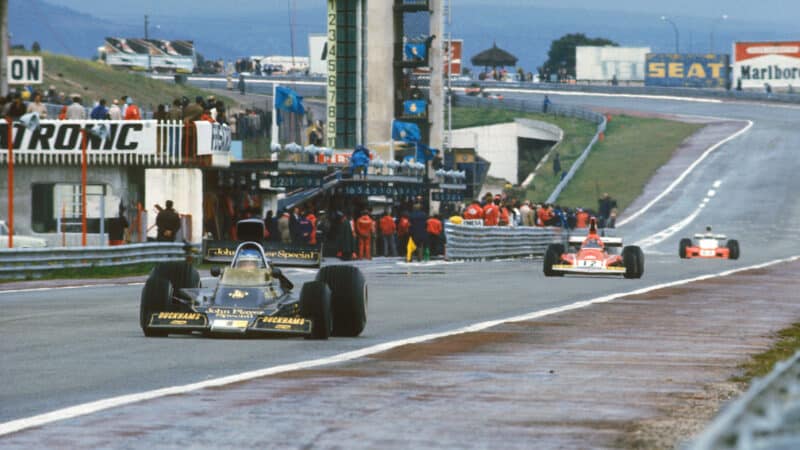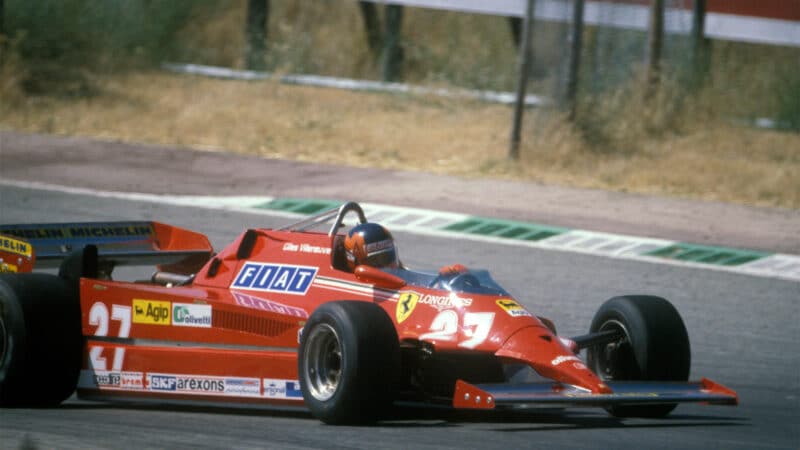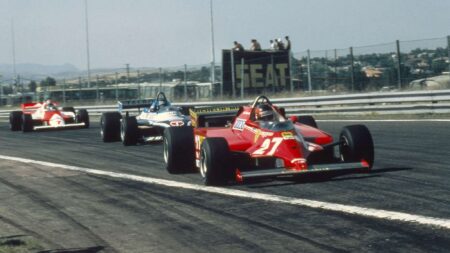Nevertheless, the Canadian’s brilliance shone through.
By the end of the start/finish straight, Villeneuve was already up four places and by the time the field re-entered Turn 1 on lap 2, he had passed Reutemann’s DFV-powered Williams for second with a daring lunge. The leading Williams of Alan Jones then forfeited the lead when a lapse in concentration sent him spinning into the gravel.
Villeneuve was in clear air, but the pressure was back on before long. A rapid pack composed of Laffite, Watson, Reutemann and de Angelis all quickly closed in, as Villeneuve struggled around the twisting circuit. The five cars ran almost nose-to-tail all the way to the chequered flag, but Ferrari’s leading Canadian remained unflinching.
“It was outstanding,” Watson told Motor Sport. “He used the straight-line benefits of that car very efficiently. He didn’t make a mistake, or if he did make a mistake he covered it enough to get away with it. He was manhandling that dog of a car around the corners.”
The effort of winning was so much that Villeneuve was famously held up by reporters during post-race interviews, his already small stature diminished further with a 4kg weight loss during the race.
No more heroes? No more Jarama…
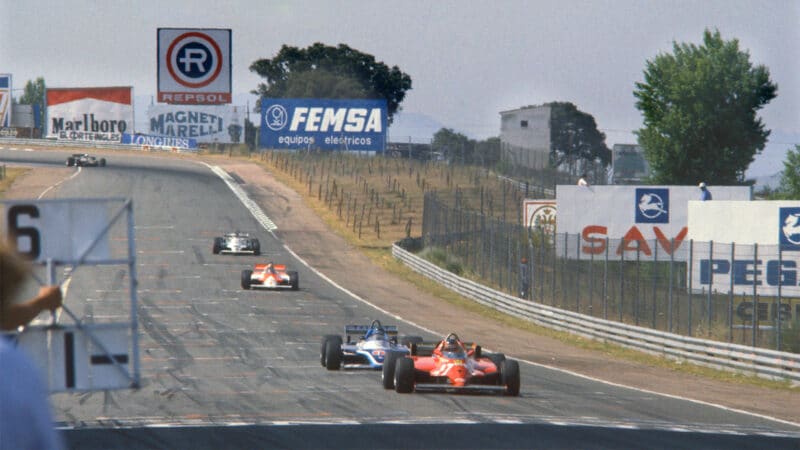
There’s plenty of action on track, but where are the fans?
Grand Prix Photo
While the 1981 Spanish Grand Prix is remembered as a F1 classic today, the feeling was not shared among Spanish F1 fans of the time. As a small racing venue, Jarama needed 85,000 spectators to cover the lavish costs of hosting an F1 race, but just 70,000 turned out — many doing so in anger due to the exclusion of Madrileño driver Emilio de Villota.
The Spaniard was a renowned local hero and had begun racing at Jarama in a car purchased with help from family, friends and local businesses. After leaving his job as the manager of a Banco Ibérico, he then went on to race in Formula 1 throughout the 1970s for independent constructors’ including RAM Racing, Iberia Airlines and Centro Asegurador F1. He’d only qualify for two races and never scored a point, but a drivers’ title in the 1980 Aurora AFX British F1 Championship was perhaps enough to convince the majority of his adoring fans that his talent was worthy of a spot in motor sport’s top echelon.
F1 boss Bernie Ecclestone didn’t share the same opinion and, ahead of the 1981 campaign, had made clear his plans to exclude privateer teams from the championship. De Villota fell victim to the diktat at Jarama. The Spaniard was permitted to take part in free practice on Friday but was forced out of the pits for the remainder of the weekend, leaving local fans devastated. Many chose to hold up signs of outrage or voice their anger from the half-empty grandstands, while many more chose not to come to the race at all.
The circuit took a heavy loss as a result and would never host a F1 race again.
Jackie Stewart’s victory marred by fiery crash
F1’s second visit to Jarama in 1970 should have been a celebration of another dominant performance by a title-winning Brit, as Jackie Stewart followed in the footsteps of Graham Hill to claim victory by over a lap. But instead, his triumph was marred — first by a first lap crash caused by Jacky Ickx and Jackie Oliver and then by the subsequent incompetence of trackside marshals who tried helplessly to deal with it.
Neither driver was seriously harmed in the incident itself: after Oliver’s BRM lost control at the Bugatti hairpin and collided with Ickx’s Ferrari both drivers were able to scramble from their cockpits relatively quickly as the cars caught fire, with Ickx only sustaining minor burns to his legs. But when marshals attempted to tackle the blaze at the top of a banked corner, they found themselves woefully unequipped.
First they tried to douse the fire with water — spraying it across the circuit in front of incoming cars who were still trying to race — which only made the fire hotter due to the magnesium in both cars’ chassis. Ickx’s Ferrari, still ablaze, then rolled down across the circuit and onto the racing line. As the chaotic scene unfolded, a foam truck finally arrived and doused the fires which had reduced both cars to charred steel and engine blocks. Smoke continued to pour across the circuit almost up until the chequered flag 90 laps later…
1974: Niki Lauda’s dominant maiden win
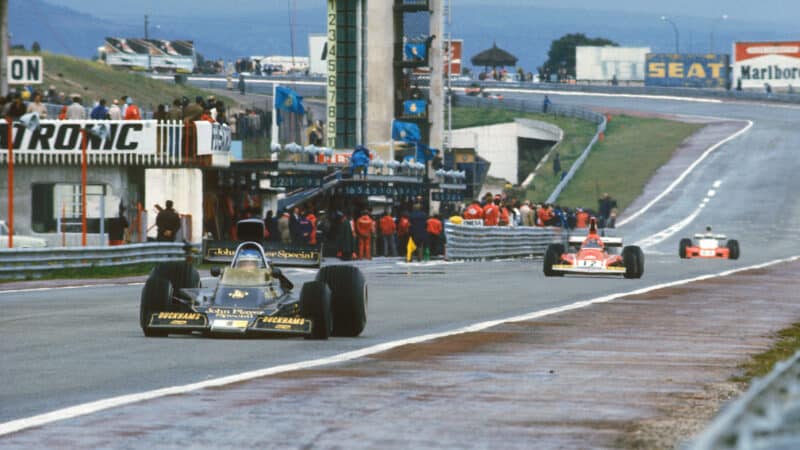
Lauda bested Peterson and others in a chaos-filled Spanish GP
Grand Prix Photo
He ended his career with three F1 world championships, 25 grand prix victories and 24 pole positions, but Niki Lauda‘s legacy arguably began in Jarama.
In his first season with Ferrari, the Austrian was already making a serious impression. He finished second on his debut in Argentina and qualified third in Brazil before retiring with a loose wing mounting on lap three. At the following round in South Africa, he took a mesmerising pole position but then suffered another dose of misfortune when his ignition broke four laps before the chequered flag. His luck would change in Jarama.
